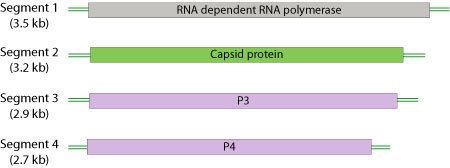Group Group III (dsRNA) Rank Genus | Family Chrysoviridae | |
 | ||
Similar Partitiviridae, Totiviridae, Tetraviridae, Cystovirus, Corticovirus | ||
Chrysovirus is a genus of viruses. It is the only genus in the family Chrysoviridae. They are class III double stranded RNA viruses which infect fungi, in particular Penicillium. Their name is derived from the Greek word chrysos which means yellow-green. There are currently nine species in this genus including the type species Penicillium chrysogenum virus.
Contents
Taxonomy
Group: dsRNA
Structure
Viruses in Chrysovirus are non-enveloped, with icosahedral geometries, and T=1, T=2 symmetry. The diameter is around 35-40 nm. Genomes are linear and segmented, around 12.5kb in length. The genome codes for 4 proteins. The genome has three double stranded RNA segments. All have extended highly conserved terminal sequences at both ends.
Life Cycle
Viral replication is cytoplasmic. Entry into the host cell is achieved by penetration into the host cell. Replication follows the double-stranded RNA virus replication model. Double-stranded RNA virus transcription is the method of transcription. The virus exits the host cell by cell to cell movement. Fungi serve as the natural host.
